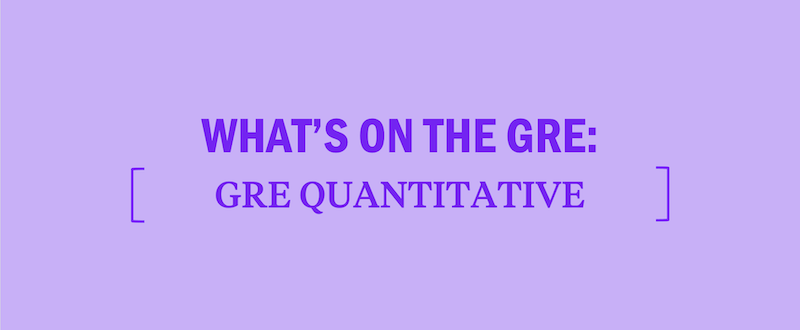What's Tested on the GRE?
What’s tested on the GRE? The GRE measures your command of basic arithmetic, algebra, geometry, and data analysis, as well as college-level vocabulary. More importantly, it measures your ability to analyze and evaluate written material, think critically, and solve problems.
There are three total sections on the GRE and some test-takers face an unscored experimental or research section. You’ll tackle 80 scored questions on the GRE and two scored Analytical Writing tasks. If you are given a research or experimental section on your GRE test date, you may have to complete an additional 20 questions that won’t affect your total score.
GRE Test Section Breakdown
The GRE contains two essays, at least two quantitative and two verbal sections, and one experimental or research section.
| SECTION | NUMBER OF QUESTIONS | TIME ALLOTTED | SCORE RANGE |
| Analytical Writing | 1 argument essay, 1 issue essay | 30 minutes per essay; 60 minutes total | 0 to 6 |
| Verbal Reasoning (Verbal) | 6 text completion + 4 sentence equivalence + 10 reading comprehension = 20 total questions | two 30-minute sections; 60 minutes total | 130 to 170 |
| Quantitative Reasoning (Quant) | 7-8 quantitative comparison + 12-13 problem solving = 20 total questions | two 35-minute sections; 70 minutes total | 130 to 170 |
GRE Analytical Writing
The GRE Analytical Writing section consists of two essays that are timed separately. You’ll have 30 minutes to complete each, and they’ll both be completed at the top of the exam. Both tasks ask you to craft an analysis in response to a prompt—you will have to analyze an issue and analyze an argument. Graders reward sound logic in your writing rather than beautiful prose. Being verbose won’t get you extra points, but getting to the point and supporting your argument will.
[ KEEP STUDYING: GRE Analytical Writing Section ]
GRE Verbal Reasoning (Verbal)
There are three question types on the GRE Verbal section: Text Completion, Sentence Equivalence, and Reading Comprehension. You’ll have 30 minutes to complete 20 questions, and there are two Verbal sections total. Each Verbal section will follow the same trajectory: Text Completions, then a block of Reading Comp questions, then Sentence Equivalence, and finally a second block of Reading Comp. Brushing up on GRE vocabulary and learning how to efficiently handle the long (and sometimes not very interesting) Reading Comp passages is key to a high score on Verbal.
[ KEEP STUDYING: GRE Verbal Section ]
GRE Quantitative Reasoning
The math section on the GRE, known as Quantitative Reasoning or Quant, consists of three question types: Quantitative Comparison, Problem Solving, and Data Interpretation. There are two sections total, and each section is 35 minutes long with 20 questions. Like Verbal, the GRE Math sections are both structured identically: first you’ll see the Quantitative Comparison questions, then the Problem Solving questions, and finally the Data Interpretation questions. Most of the concepts you’ll see on GRE Quant are covered in middle and high school, but you’ll want to make sure you have a firm grasp on algebra and geometry, especially if you haven’t taken a math class in some time.
[ KEEP STUDYING: GRE Quantitative Reasoning Section ]
The unscored, so-called “Experimental” section and Research section have no effect on your GRE score. You may see either, but not both, on your test. Let’s talk about them separately for a moment. The unscored section, if you have one on your test, will appear among the scored sections in any order. You will not be able to distinguish it from the scored sections. What does that mean for you as a test taker? You should do your best on all of the Quant and Verbal sections. The Research section is a little different. It will always come at the end of the test and it will always be identified as an unscored section. The test maker may offer you an incentive for completing the section or for performing well on it. So, read the instructions and decide whether you want to take the section. Your score will not be affected either way.
So, why does the GRE include unscored and/or Research sections? It’s because the test maker is testing out new questions. In unscored sections, they’re trying out new items in familiar formats (QC, PS, etc.). In Research sections, the GRE is actually trying out new question formats. A couple of years ago, for example, All-That-Apply Quant questions appeared only in Research sections. Now, they’re part of the test.



